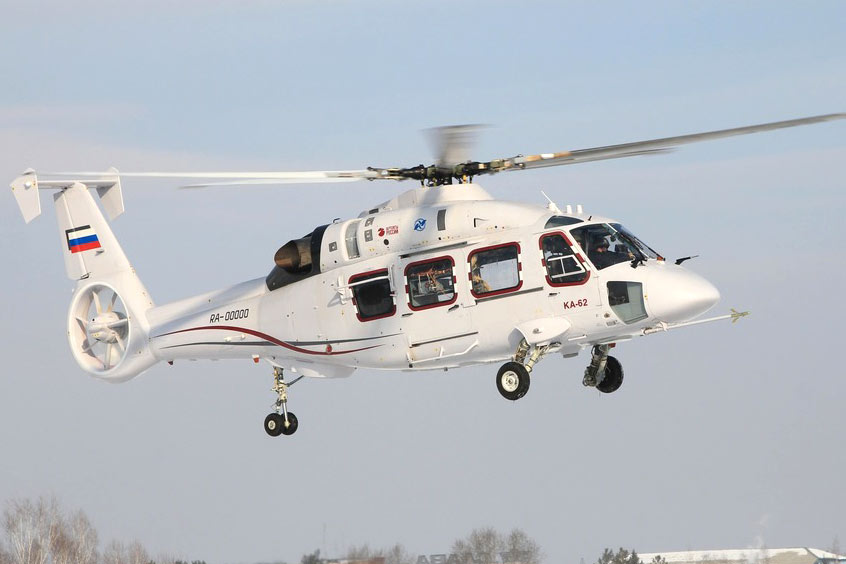Why visit ACE ’24?

Russian Helicopters, its parent company Rostec State Corporation and Novikombank have signed an agreement on organising financing for serial production of the Ka-62 medium multipurpose helicopter at Progress AAK in Arsenyev, Primorsky Territory in Russia. For these purposes, the aircraft building enterprise, which is part of the holding company, is to be allocated 10 billion rubles.
Financing can be attracted in the form of a loan, a credit line with a disbursement limit, a credit line with a debt limit or a credit agreement.
“These funds will be used to deploy the serial production of the Ka-62 multipurpose helicopter at the Progress enterprise in Primorye,” notes Andrey Boginsky, general director of Russian Helicopters. “The helicopter has been designed taking into account all modern requirements for flight safety, reliability and comfort. It is intended to complement the existing range of Russian helicopters in order to fully satisfy the needs of domestic and foreign customers.”
In order to prepare for the serial production of Ka-62 helicopters, AAK Progress has already manufactured more than 90 per cent of the special equipment for the production of parts, assemblies and units. Technological preparation of the final assembly and testing of the helicopter systems at the control-test and flight-test stations has been completed by at least 92 per cent.
Parts produced in-house for them are 35-75 per cent complete. In addition, to ensure the fastest production of the helicopters, about 90 per cent of purchased components have already been contracted.
The Ka-62 is designed using the latest achievements of the aviation industry. The helicopter meets Russian and international airworthiness standards, operational rules for offshore operations, international standards for reliability, service life, flight safety, comfort conditions, technical operation and maintainability. It can be used in passenger, cargo-passenger and cargo versions, carrying up to 15 passengers or two tons of cargo in the cabin or 2.5 tons on an external sling. The helicopter can be used in the widest possible range of climatic and geographical conditions, at temperatures from -50 to +50 degrees Celsius. The Ka-62 is capable of flying in difficult weather conditions and in icy conditions. The helicopter can also be operated from base airfields and oil platforms. It is distinguished by a high cruising speed (290 km/h) and a high proportion of composites in the structure, which is up to 60 per cent by weight. The Ka-62 is equipped with a wheeled chassis of increased energy intensity, has a reinforced fuselage and attachment points for the main units and shock-absorbing seats for the crew and passengers.